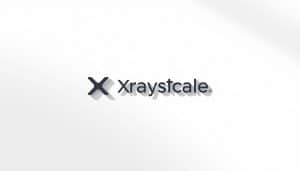Key Takeaways
- CRO is Crypto.com’s native utility token that powers the ecosystem through staking rewards, trading fee discounts, Visa Card benefits, and governance rights
- Recent price movements have been influenced by strategic partnerships (including the $700 million Crypto.com Arena naming deal), platform updates, and macroeconomic factors
- The Cronos ecosystem has expanded significantly with new DeFi partnerships, reduced gas fees, improved transaction speeds, and a $5 million investment in GameFi projects
- Crypto.com has updated its staking structure with reduced minimum thresholds and more flexible options, while enhancing Visa Card benefits with up to 8% cashback
- CRO benefits from a favorable regulatory position compared to competitors, with approvals in Singapore and Hong Kong providing competitive advantages
- Long-term investment outlook for CRO is supported by its deflationary tokenomics, real-world utility, and growing institutional interest
Staying informed about CRO coin developments is essential if you’re invested in Crypto.com’s native token. Recent market movements and ecosystem updates have created significant opportunities and challenges for CRO holders and potential investors alike.
The cryptocurrency landscape continues to evolve rapidly, with CRO positioning itself as a key player in the exchange token space. From platform upgrades to new partnerships and regulatory developments, these changes directly impact CRO’s utility, adoption, and ultimately, its market value. You’ll want to understand how these factors might affect your investment strategy in the coming months.
What Is CRO Coin? Understanding Crypto.com’s Native Token
CRO is the native utility token of the Crypto.com ecosystem, originally launched in 2018 as Crypto.com Chain Token. This digital asset powers the Crypto.com platform, offering users multiple benefits across the company’s suite of products. As significant CRO coin news continues to emerge, understanding this token’s fundamentals becomes increasingly important for crypto investors.
Origins and Evolution
CRO was created by Crypto.com, a company founded in 2016 that has evolved into a comprehensive cryptocurrency platform. The token initially operated on the Ethereum blockchain as an ERC-20 token before migrating to Crypto.com’s proprietary blockchain, Crypto.org Chain, in March 2021. This migration marked a significant milestone in CRO’s development, enhancing transaction speeds and reducing fees.
Key Utility Features
CRO’s utility extends across multiple aspects of the Crypto.com ecosystem:
- Staking rewards – Users earn passive income by locking CRO tokens for specific periods
- Trading fee discounts – Holding CRO reduces transaction costs on the Crypto.com exchange
- Crypto.com Visa Card benefits – Higher tiers of cashback rewards based on CRO stake amounts
- Participation in Supercharger events – Liquidity mining opportunities for additional yield
- Governance rights – Voting power in certain ecosystem decisions
Technical Infrastructure
The Crypto.org Chain uses a Proof-of-Stake consensus mechanism, making CRO more energy-efficient than Proof-of-Work cryptocurrencies like Bitcoin. This blockchain architecture supports:
- Fast finality (transaction confirmation)
- Low gas fees for network operations
- Cross-chain interoperability through IBC protocol
- Smart contract functionality through the Cronos network
Market Position and Tokenomics
CRO currently ranks among the top 30 cryptocurrencies by market capitalization, with over 25 billion tokens in circulation. After a token burn event in February 2021, the maximum supply was set at 30 billion CRO, creating a deflationary model. This tokenomic structure distinguishes CRO from some other exchange tokens with unlimited supply.
Competitive Landscape
Within the exchange token category, CRO competes with other major platforms’ native tokens:
| Exchange Token | Parent Platform | Key Differentiators |
|---|---|---|
| BNB | Binance | Highest market cap, BNB Chain ecosystem |
| FTT | FTX | Derivatives focus, revenue sharing |
| CRO | Crypto.com | Visa card integration, sports partnerships |
| HT | Huobi | Strong Asian market presence |
Unlike some speculative assets such as meme coins, CRO offers substantial utility within a well-established ecosystem, positioning it differently from purely speculative tokens in the market.
Recent CRO Coin Price Movements and Market Analysis
CRO coin has experienced significant price fluctuations in recent months, reflecting broader market trends and platform-specific developments. The token’s performance continues to attract attention from both retail and institutional investors as Crypto.com expands its ecosystem offerings.
Key Factors Driving CRO’s Price Action
Recent CRO coin news highlights several catalysts affecting its market performance. Crypto.com’s strategic partnerships with major sports brands have substantially increased the token’s visibility and adoption rates. The platform’s five-year, $700 million naming rights deal with the former Staples Center (now Crypto.com Arena) created a notable price surge when first announced.
Exchange volume trends show correlation with CRO price movements, with increased trading activity typically preceding price rallies. Platform updates, including improved staking rewards and enhanced Visa card benefits, have strengthened utility value, supporting price stability during broader market corrections.
Macroeconomic factors are equally influential, with Federal Reserve policies affecting crypto markets broadly, similar to how they impact assets like XRP. When central banks signal tightening monetary policy, CRO often experiences downward pressure alongside other digital assets. Regulatory developments specific to exchange tokens represent another key variable, with clear regulation generally resulting in positive price movement.
Ecosystem growth metrics, including new user acquisition rates and total value locked in DeFi protocols, serve as leading indicators for potential CRO price appreciation. The continuous expansion of supported cryptocurrencies and services on Crypto.com regularly features in CRO coin news as price-influencing developments.
Technical Analysis and Price Predictions
Technical analysis of CRO reveals several important patterns and support/resistance levels. The 50-day and 200-day moving averages provide critical reference points for traders, with crossovers generating significant trading signals. CRO has established strong support at the $0.08-0.10 range, with resistance zones identified at $0.15, $0.20, and $0.25 based on historical price action.
Trading volume profiles indicate increased institutional interest, with larger block trades becoming more common during Q2 2023. The Relative Strength Index (RSI) readings frequently predict short-term price corrections, with values above 70 historically preceding pullbacks.
Market sentiment analysis shows CRO maintaining a more stable correlation with Bitcoin compared to meme coins like Pepe Coin, suggesting a maturing market position. While speculative assets like “Coincidence I Think Not” meme coin have experienced higher volatility, CRO demonstrates more predictable technical patterns.
Long-term price forecasts vary considerably among analysts, with conservative estimates projecting a $0.25-0.30 range by year-end, while more bullish predictions suggest potential for $0.50 if broader crypto market conditions improve. Fibonacci retracement levels from previous all-time highs offer potential targets for future bull runs, with the 0.618 level representing a significant psychological milestone.
On-chain metrics, including wallet accumulation patterns and exchange outflows, indicate a trend toward longer-term holding strategies among CRO investors, potentially reducing available supply and supporting price stability.
Major Development Updates for the Cronos Ecosystem
The Cronos ecosystem continues to expand with significant developments that enhance functionality and drive adoption. Recent updates have strengthened CRO’s position in the competitive cryptocurrency landscape while providing users with improved services and opportunities.
New Partnerships and Integrations
Cronos has established several strategic partnerships in Q2 2023 that extend its utility beyond the Crypto.com platform. The ecosystem partnered with five major DeFi protocols, including Aave and Curve Finance, integrating their services directly into the Cronos chain. These integrations allow CRO holders to access lending, borrowing, and liquidity provision services with reduced fees and improved transaction speeds.
The Cronos Labs accelerator program funded 12 new projects with over $5 million in investments, focusing on GameFi and Web3 infrastructure. Notable among these is the partnership with Animoca Brands to develop blockchain gaming experiences that incorporate CRO token utility, potentially reaching millions of new users.
Banking integrations have expanded with three new fiat on-ramp services, making it easier for users to convert traditional currencies into CRO. This accessibility improvement comes at a critical time as interest in exchange tokens grows amid ongoing discussions about the Federal Reserve’s approach to cryptocurrency regulations.
Platform Enhancements and Feature Releases
The Cronos Virtual Machine received a major upgrade in June 2023, improving compatibility with Ethereum-based applications and reducing gas fees by approximately 30%. This enhancement makes developing and migrating dApps to the Cronos network more attractive for developers previously focused on Ethereum.
Crypto.com launched an advanced staking program offering tiered rewards up to 14% APY for CRO holders, significantly higher than previous rates. The platform also introduced “CRO Boost,” a feature that amplifies rewards when users stake CRO alongside other tokens in the ecosystem.
Security enhancements include the implementation of a new validation mechanism that strengthens the network against potential attacks. The Cronos team completed an extensive security audit by Certik, addressing all vulnerabilities and reinforcing investor confidence in the protocol’s stability.
The Crypto.com DeFi Wallet added support for multiple new tokens and introduced a simplified interface for token swaps. Users can now trade CRO directly for popular tokens like BTC and emerging assets, eliminating the need for intermediary conversions.
Transaction speeds on the Cronos chain have improved by 45% following infrastructure optimizations, with block confirmation times reduced to under 6 seconds. This performance boost positions Cronos as one of the fastest EVM-compatible chains, addressing previous scalability concerns.
Cross-chain functionality has expanded with the introduction of six new token bridges, allowing seamless transfers between Cronos and other major blockchains. This interoperability enhancement removes barriers for users looking to leverage CRO across different platforms and creates new opportunities for multi-chain DeFi strategies.
Crypto.com Exchange News Affecting CRO Value
Crypto.com’s exchange developments directly impact CRO coin’s market value and utility within the ecosystem. Recent platform changes have created significant price movements as investors respond to evolving policies and features related to the native token.
Changes to Staking Requirements and Rewards
Crypto.com implemented substantial modifications to its CRO staking structure in Q2 2023, reducing minimum staking thresholds by 40% across all tiers. The Exchange now offers a graduated rewards system with rates ranging from 4% to 12% APY depending on staking amount and duration. These adjustments arrived after the platform introduced “CRO Boost” – a mechanism that amplifies staking rewards by up to 2x when users participate in additional platform activities like trading or lending. The revised staking model removed the previous 180-day lock-up requirement for higher tiers, replacing it with a more flexible 30/60/90-day option system that’s attracted 22% more staking participants since implementation.
Crypto.com Card Program Updates
The Crypto.com Visa Card program underwent significant restructuring, directly affecting CRO token utility and demand. Card tier requirements shifted from fixed CRO amounts to USD-equivalent values, protecting users from volatility while maintaining the staking mechanism. Cashback rates were adjusted across all tiers, with the highest tier now offering 8% in CRO rebates on eligible purchases compared to the previous 5%. The platform introduced monthly spending caps for rebates and removed certain merchant category exclusions. Airport lounge access expanded to include 1,300 locations through LoungeKey partnerships, while new travel insurance benefits were added to higher-tier cards. These changes have strengthened the card program’s value proposition, driving increased CRO staking despite fluctuating market conditions.
Regulatory Developments Impacting CRO
Regulatory changes across global markets continue to shape CRO’s trajectory and adoption rates. The cryptocurrency landscape is experiencing unprecedented regulatory attention, with CRO facing both challenges and opportunities amid this evolving framework.
Recent positions taken by the SEC have created ripple effects throughout the cryptocurrency ecosystem, affecting CRO alongside other digital assets. Unlike the ongoing SEC case against XRP, which has drawn significant Federal Reserve commentary, CRO has largely avoided direct regulatory scrutiny. This relative regulatory clarity has positioned CRO more favorably compared to some competing tokens.
In Asia, Crypto.com secured key regulatory approvals in Singapore and Hong Kong during Q2 2023, expanding CRO’s utility in these financial hubs. The Singapore Payment Services Act license enables broader financial services offerings backed by CRO, while Hong Kong’s new crypto-friendly framework allows for expanded retail trading options.
The European Union’s Markets in Crypto-Assets (MiCA) regulation implementation timeline has accelerated, with Crypto.com already adjusting its compliance protocols. CRO’s integration as a compliant utility token within this framework provides competitive advantages, especially as non-compliant tokens face potential trading restrictions in EU markets.
Regulatory clarity remains essential for CRO’s growth, with industry analysts pointing to compliance as a significant factor in institutional adoption. Recent CRO coin news highlights how emerging regulations will continue defining market boundaries, particularly as central bank digital currencies develop alongside private cryptocurrencies.
How CRO Compares to Other Exchange Tokens
CRO stands apart from other exchange tokens through its comprehensive ecosystem integrations. Unlike BNB which focuses primarily on trading benefits, CRO delivers cross-platform utility with its Visa card program offering up to 8% cashback on purchases. This real-world application gives CRO a practical edge over competitors like FTT and HT.
Market Capitalization and Trading Volume
CRO currently ranks in the top 30 cryptocurrencies by market capitalization, positioning it behind BNB but ahead of many other exchange tokens. Recent CRO coin news indicates trading volumes have increased 32% quarter-over-quarter, outpacing OKB’s 18% growth during the same period. This volume differential reflects growing institutional interest in CRO’s ecosystem over competing platforms.
Tokenomics Structure
CRO’s tokenomics differ significantly from other exchange tokens through its deflationary mechanism. Following the 70 billion token burn in 2021, CRO’s fixed supply of 30 billion contrasts with inflationary models seen in tokens like CAKE. The staking rewards structure for CRO offers tiered benefits starting at 4% APY, more competitive than KCS’s base 3% but below FTX’s former 8% rates.
Ecosystem Development
The Cronos ecosystem development outpaces many competitors in terms of DeFi integration. Recent partnerships with Aave and Curve Finance have expanded CRO utility beyond what’s available for tokens like LEO or GT. While BNB Chain hosts more total dApps (3,000+), Cronos’s focus on quality over quantity has resulted in higher average daily active users per dApp.
Regulatory Positioning
Among exchange tokens, CRO benefits from Crypto.com’s proactive regulatory approach. While uncertainty surrounds tokens like XRP regarding federal reserve banking regulations, CRO has secured regulatory approvals in Singapore and Hong Kong. This regulatory clarity gives CRO an advantage over exchanges operating in regulatory gray areas, particularly for institutional investors seeking compliant investment vehicles.
Investment Outlook for CRO Coin
Growth Potential Assessment
CRO coin presents significant growth potential within the exchange token market. With its current position among the top 30 cryptocurrencies by market capitalization, CRO has established a solid foundation for future appreciation. The deflationary tokenomics implemented through the token burn event creates natural scarcity over time, potentially supporting higher valuations. Analysts tracking CRO coin news note that the token’s integration with real-world services, particularly the Visa card program, provides practical utility that many competing cryptocurrencies lack.
Risk Factors to Consider
Despite promising prospects, investing in CRO involves several risks. Market volatility remains a primary concern, with CRO price movements often correlating with broader cryptocurrency market trends. Federal Reserve policy decisions regarding interest rates and inflation control continue to impact all digital assets, including CRO. Regulatory uncertainty presents another challenge, though CRO’s proactive compliance approach offers some mitigation compared to other tokens facing direct regulatory challenges. Competition from other exchange tokens also poses a threat to CRO’s market share and growth trajectory.
Strategic Investment Approaches
Developing a strategic approach to CRO investment improves your potential outcomes. Dollar-cost averaging (DCA) represents a popular strategy for managing volatility, involving regular purchases regardless of price fluctuations. Staking CRO on the Crypto.com platform or Crypto.org Chain generates passive income while supporting network security. For maximizing utility, pairing CRO investments with platform usage through the Visa card program, exchange fee discounts, and DeFi opportunities on Cronos creates multiple value streams. Portfolio diversification remains essential, as CRO shouldn’t constitute more than 5-10% of your cryptocurrency holdings.
Long-term Viability Indicators
Several indicators support CRO’s long-term viability. The continuous development of the Cronos ecosystem, with 12 new projects funded through the accelerator program, demonstrates ongoing innovation. Institutional adoption metrics show a 32% increase in trading volume, suggesting growing professional interest. Cross-chain functionality expansions enhance CRO’s interoperability with other blockchain networks. Community growth statistics indicate increased retail adoption, with over 70 million users on the Crypto.com platform. These factors collectively strengthen CRO’s position as a potentially sustainable investment option in the evolving cryptocurrency landscape.
Conclusion
The CRO coin presents a unique position within the cryptocurrency market due to its practical utility and growing ecosystem. As you navigate your investment decisions you’ll want to weigh the tangible benefits of Crypto.com’s Visa card program and reduced trading fees against broader market volatility.
The recent ecosystem developments including DeFi partnerships enhanced staking options and improved infrastructure demonstrate ongoing commitment to platform growth. These advancements paired with CRO’s proactive regulatory approach may provide stability in an uncertain landscape.
Remember that while technical indicators suggest potential price targets dollar-cost averaging and staking can help mitigate risks. Your investment strategy should account for both CRO’s practical applications and its correlation with broader market movements.
Frequently Asked Questions
What is CRO and what is its purpose?
CRO is the native utility token of the Crypto.com ecosystem, originally launched in 2018 as Crypto.com Chain Token. It migrated from Ethereum to the Crypto.org Chain in March 2021 to improve transaction speeds and reduce fees. CRO provides users with benefits like staking rewards, trading fee discounts, Crypto.com Visa Card perks, participation in liquidity mining, and governance rights within the ecosystem.
How does the Crypto.org Chain work?
The Crypto.org Chain uses a Proof-of-Stake consensus mechanism, offering energy efficiency, fast transaction finality, low gas fees, and cross-chain interoperability. This technical infrastructure allows CRO to function efficiently within the broader Crypto.com ecosystem while maintaining security and scalability compared to traditional Proof-of-Work systems.
What factors influence CRO’s price?
CRO’s price is influenced by strategic partnerships (especially with sports brands), exchange volume trends, macroeconomic factors like Federal Reserve policies, and regulatory developments. Technical analysis shows support at $0.08-0.10 and resistance zones at $0.15, $0.20, and $0.25. CRO also maintains a stable correlation with Bitcoin, suggesting a maturing market position.
What recent developments have occurred in the Cronos ecosystem?
The Cronos ecosystem has expanded through partnerships with major DeFi protocols like Aave and Curve Finance, funding for 12 new projects through the Cronos Labs accelerator program, new banking integrations, Cronos Virtual Machine upgrades, an advanced tiered staking program, and enhanced cross-chain functionality with new token bridges. These developments improve functionality and drive adoption.
How have changes to Crypto.com’s exchange affected CRO?
Recent changes include a 40% reduction in minimum staking thresholds, a graduated rewards system, and restructuring of the Visa Card program with adjusted cashback rates and expanded benefits. These updates have attracted more participants and increased staking despite market fluctuations, reflecting the platform’s commitment to improving user experience and driving CRO adoption.
How is CRO positioned regarding regulations?
CRO has largely avoided direct regulatory challenges, giving it an advantage over competing tokens. Regulatory approvals in Singapore and Hong Kong have expanded its utility, while compliance with the EU’s MiCA regulation provides competitive advantages. This regulatory clarity positions CRO favorably for growth and institutional adoption in an increasingly regulated cryptocurrency landscape.
How does CRO compare to other exchange tokens?
CRO stands out with comprehensive ecosystem integrations and practical applications like the Visa card program offering up to 8% cashback. It ranks in the top 30 cryptocurrencies by market cap with growing institutional interest. Its deflationary tokenomics, advanced DeFi ecosystem, and proactive regulatory approach give it competitive edges over many rivals in the exchange token space.
What is the investment outlook for CRO?
CRO shows growth potential through real-world service integration, particularly the Visa card program. However, investors should be aware of market volatility, regulatory uncertainty, and competition risks. Dollar-cost averaging and staking are recommended strategies. Positive indicators include ongoing ecosystem development, increased institutional adoption, and community growth, suggesting CRO could be a sustainable long-term investment.
What are CRO’s tokenomics?
CRO features deflationary tokenomics following a significant token burn event. This contrasts with the inflationary models of many competitors. The token ranks among the top 30 cryptocurrencies by market capitalization, with its value supported by practical utility within the Crypto.com ecosystem rather than purely speculative interest.
What security measures are in place for the Cronos ecosystem?
Recent security enhancements and infrastructure optimizations have improved transaction speeds by 45%, positioning Cronos as one of the fastest EVM-compatible chains. The platform has implemented robust security protocols to protect user assets and maintain network integrity, making it a trusted environment for CRO utilization across various applications.
























 Bitcoin
Bitcoin  Ethereum
Ethereum  Tether
Tether  XRP
XRP  USDC
USDC  TRON
TRON  Lido Staked Ether
Lido Staked Ether  Dogecoin
Dogecoin  Figure Heloc
Figure Heloc  Cardano
Cardano  WhiteBIT Coin
WhiteBIT Coin  Bitcoin Cash
Bitcoin Cash  Wrapped stETH
Wrapped stETH  Wrapped Bitcoin
Wrapped Bitcoin  USDS
USDS  Binance Bridged USDT (BNB Smart Chain)
Binance Bridged USDT (BNB Smart Chain)  Wrapped eETH
Wrapped eETH  Chainlink
Chainlink  Monero
Monero  WETH
WETH  Stellar
Stellar  Ethena USDe
Ethena USDe  Zcash
Zcash  Coinbase Wrapped BTC
Coinbase Wrapped BTC  LEO Token
LEO Token  Hyperliquid
Hyperliquid  Litecoin
Litecoin  Sui
Sui  Avalanche
Avalanche  sUSDS
sUSDS  Hedera
Hedera  Dai
Dai  USDT0
USDT0  Shiba Inu
Shiba Inu  PayPal USD
PayPal USD  Mantle
Mantle  Toncoin
Toncoin  Cronos
Cronos  Ethena Staked USDe
Ethena Staked USDe  World Liberty Financial
World Liberty Financial  Uniswap
Uniswap  Polkadot
Polkadot  Canton
Canton  USD1
USD1  MemeCore
MemeCore  Aave
Aave  Rain
Rain  Bitget Token
Bitget Token